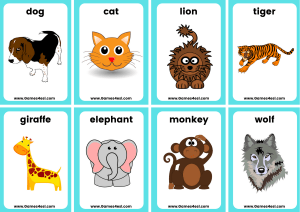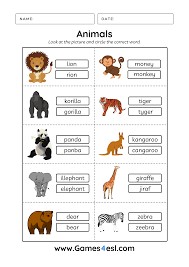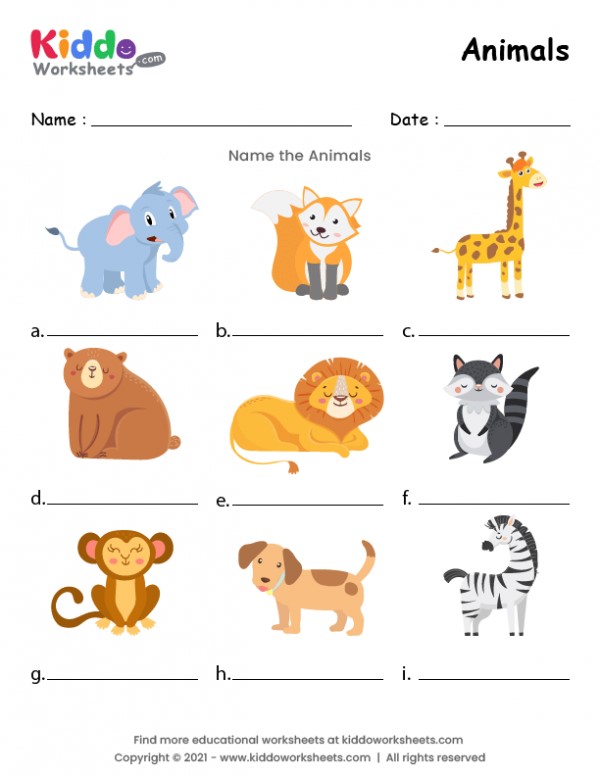|
The beginning of
the lesson/
Min-
5min
|
Greetings
The teacher greets
students; students respond to greeting and take their
places.
Hello, boys and
girls! How are you?
Warm
up
• Books closed. Put
students into small groups.
• Give the groups two
minutes to write down animals they know the English words for. Tell
students the winning group will be the one which comes up with the
most correct words.
• When the time is up,
ask a student from each group to read out their list to the
class.
|
students respond to
greeting and take their
places.
Students work in small groups. They write the animals and
read the list to the class
|
The teacher to assess learners for their
ability.
“Good job!
Well done!”
Formative Assessment

Good
job!
Descriptor:
-
remembers the lesson passed
Point
1
|
|
|
The middle of the lesson –
35 min
|
Practice
New words
• Show the pictures of the new words on the the interactive
white board. Point to the items, one at a time, and say the
corresponding words. The pupils repeat, chorally and/or
individually. Point to each item in random order. Ask
individual pupils to name them
.
Ask students
to open their books at page 13.
• Show that the animal
pictured in the example is a mixture of a tiger and a polar
bear.
Ask students to name
this invented animal,
e.g.
a polar
tiger, a tiger bear.
• Students work in pairs
to identify the rest of the animals. Tell them one of the words
(horse) will be used
twice.
• Play the
recording.
• Students listen to it,
check their answers and repeat the
words.
• Elicit names for the
invented animals and write them on the
board.
Pair
work
• Read out the
instructions. Make sure that students know what they have to
do.
• Put students in pairs
to copy and complete the chart. Ask students to do this in two
stages: first complete the chart with pets / farm animals
/ wild animals and then
with land /water animals.
• Check
answers.
• To
extend the work on the animals
vocabulary, you could ask students to turn to the
Vocabulary bank on page 117 and do
the Jog your memory! exercises.
• Write a few words on
the board which students can use in their descriptions,
e.g. wing, tail, fur, feather, trunk, claw,
beak. Teach the meaning of
these words by drawing basic pictures of animals and labelling the
relevant part of the animal, e.g. draw an elephant and label its
trunk.
• While students are
writing their descriptions, monitor and help with
vocabulary.
• Put students in pairs
to describe their invented animals to each
other.
• Ask some students to
tell the class about their partner’s
animal.
• You could put the
pictures up on the wall and do a vote to find out the class’s
favourite.
Flashcards
Conclusion during the
lesson some tasks differentiated by outcomes of the students and by
their abilities.
Students make a set of
animal flashcards. They can usethiswebsite:
http://www.cram.com/flashcards/create.
• Students can use their
flashcards in pairs to play vocabulary games, e.g. Student A
describes an animal on a flashcard. Student B guesses which animal
is being described.
Student A puts three
animal cards on the table and describes one of the animals. Student
B picks up the animal card being
described.

Conclusion• Give pupils
worksheets
Allow the pupils some time to do the quiz. Ask the pupils
check themselves.
During the lesson some tasks differentiated by outcomes of
the students and by their abilities
 
|
• learners listen and
repeat,
work with the
pictures
Students work in
pairs.
They complete the
chart.
Students make flashcards and
play vocabulary
games.
Students describe
animals
Students individually do these
tasks.
Students check their answers on the interactive white
board
|
Descriptor:
listen,
repeat
and write invented
animal
Total: 2
points
Descriptor:
- complete the chart
- describe
animals
Total: 2
points
Descriptor:
- Describe an animal on a flashcard
-give correct
answer
Total: 2
point
Total: 2
point
Total: 1
point
|
Interactive white
board
Speaking
cards

Flashcards
worksheet
interactive white board
|























